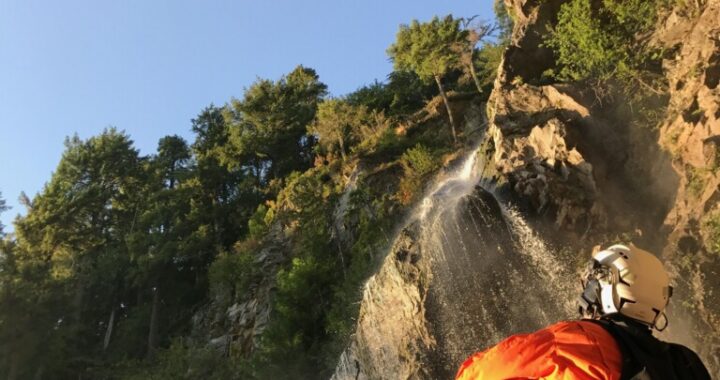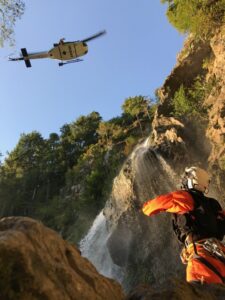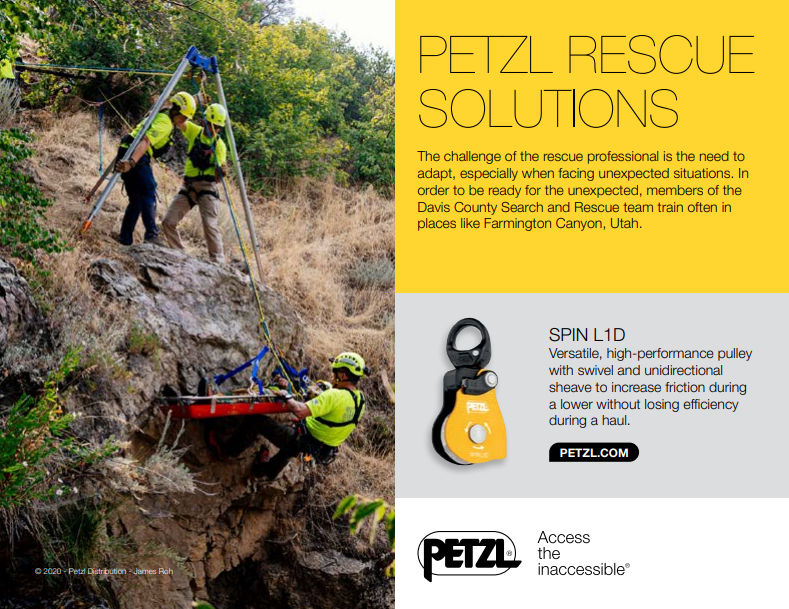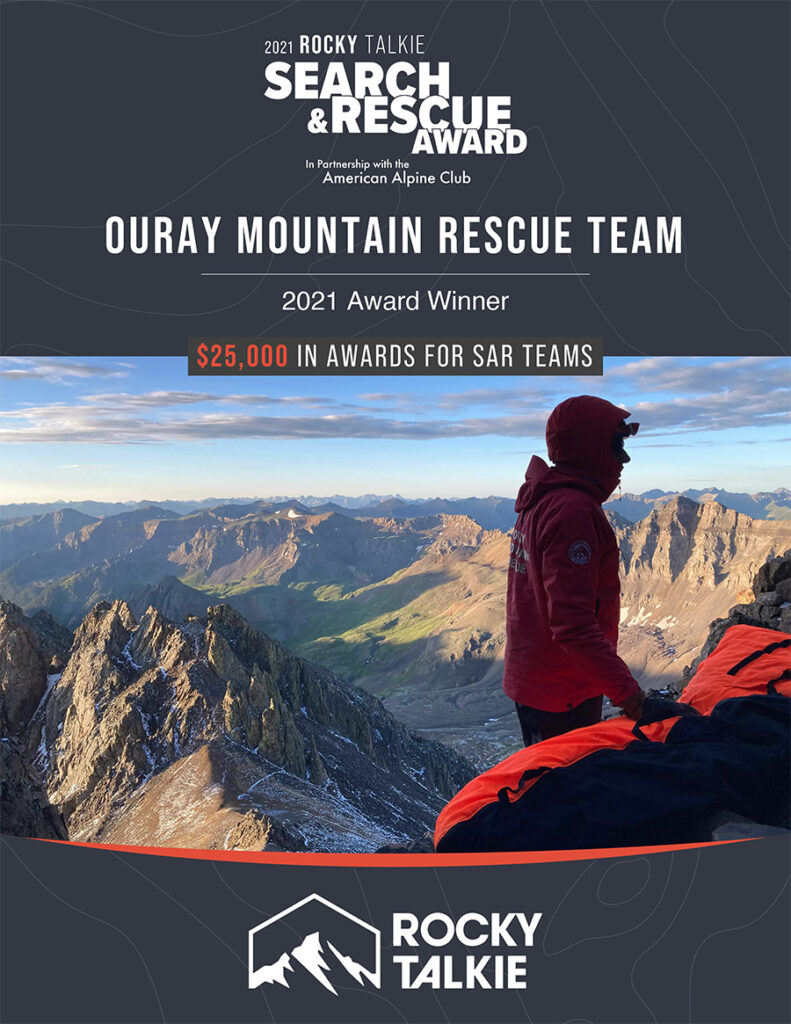SEATTLE – Surviving an incident that could have killed her was just the beginning for Nichole Doane. The Seattle-area trauma nurse nearly died in a rappelling accident and found the road to recovery to be long and brutal. But in her path forward she also discovered a way to help guide other trauma survivors through healing and support search and rescue teams like the one that evacuated her.
Doane was canyoneering at Wallace Falls in 2017 near Snohomish, Washington. Doane had done several canyoneering trips before and the Wallace Falls was her first trip of that season. After several rappels, her team came up on a more hazardous descent that involved walking down a rock face then going down a free-hanging area. Her team felt comfortable with the maneuvers, but when Doane began moving down, things went south. “I thought I was prepared for the gravity but it just pulled me faster down the rope… burning my brake hand,” she said, noting that she was using an ATC device, making it difficult to add friction to the rappel. Doane struggled to correct herself, scrambling for ways to get control and ended up falling the rest of the way. She ended up with an L2 vertebrae burst fracture, T8 fracture and broke her pelvis. She lost most of the sensation in her legs immediately after the impact as well as about half of her blood volume in her pelvis.
Doane was with two other trauma nurses on her trip who provided care for the four hours that it took for a rescue team to reach the area, aided by a rescue beacon from the team. A helicopter team evacuated her to Seattle. Doane required extensive surgery for her spine and pelvis, staying in the hospital for two weeks and was wheelchair-bound for another two months. She had internal and external bars to bind her pelvis together. While she received the required physical care, mental health care was lacking. “As a nurse, you see all of the holes in the system that should be there for people and mental health was a huge piece that got missed completely. Nobody ever asked me how I was doing mentally except my friends,” Doane said.
Doane tried to push ahead with her physical recovery, even though she knew she was struggling mentally. She moved into her aunt’s house after surgery because it had elevator access. The external bar on her pelvis kept her from comfortably sitting. She was getting two hours of sleep at a time due to the pain. “Constant pain and this lack of sleep put me very much in a downward spiral,” she said, adding it took about a week out of the hospital to realize how tough recovery would be. The bar would be removed after two months, and Doane wanted to get back to work. Despite the pain in her back, she tried to plow ahead and went back to 12 hour shifts at her hospital but struggled to make it through the day. She thought the pain was just part of having a back injury. But a year later, someone at a yoga class pointed out lumps in her back, indicating that the hardware had broken off.
Doane went back to the doctor and x-rays confirmed the hardware failure, meaning another round of surgeries and six months of recovery. That was the point where she stopped pushing and started listening to her body and mind. She figured that by pushing through her pain, she was setting herself up for more hardship. She also started to get to the bottom of why she was pushing so hard physically. Doane had a yoga practice of her own prior to her injury and used it to center herself and get more recognition of her psychological symptoms. “What was causing me to push was this future thinking of […] not being able to support myself financially, not being able to physically do the things that I wanted to do,” Doane said. She learned to stay in the present moment and try to avoid imagining worst-case outcomes of her injury.
A helicopter rescue team evacuates Nichole Doane after her fall at Wallace Falls, Wash.
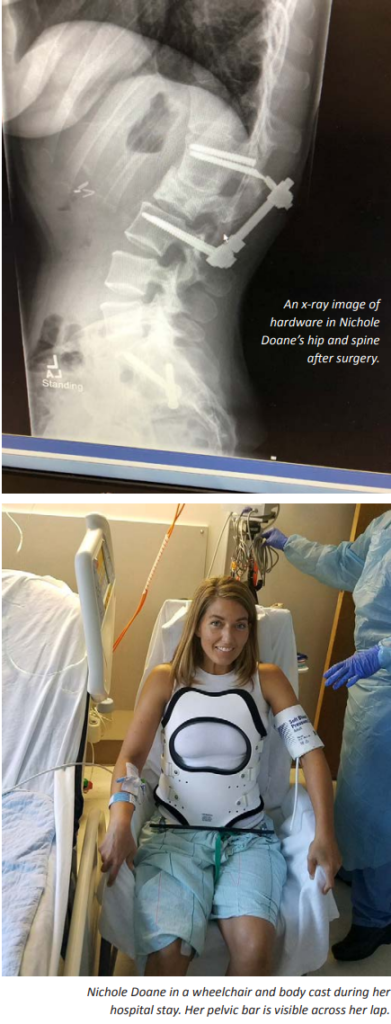
Doane has started to tell her story of recovery and appreciation for search and rescue in articles, podcasts and now an upcoming documentary. The film, “Where the Rope Ends,” profiles her recovery and also educates viewers on search and rescue teams. The project was originally titled “Be Like Water” but was changed to avoid confusion with the famous saying from actor and martial artist Bruce Lee. Doane met the director of the project, Baylee Sinner, while she was still in her wheelchair and attending a yoga teacher training. Doane says Sinner observed her in the class and approached her afterwards about sharing her story of injury and recovery. “I said ‘hell no,’” Doane said, laughing, “but I had this other goal […] to give back to search and rescue in a big way.” She warmed up to the idea of sharing her story of recovery, initially wanting to do a five-minute commercial for SAR. Outside interest in the project grew and the concept grew to a feature-length documentary. She started working on ways to make the project support Snohomish County SAR and now wants the film to serve teams across the U.S. The documentary team hosted a virtual screening for SAR teams in the summer of 2023 and wants the film to be part of a package that teams could use for fundraising. The package would include marketing materials for teams to create campaigns for screenings. The movie and materials would be available for free for those teams. Snohomish County SAR has served as a pilot for the project. Doane hopes to also hold a national virtual screening during search and rescue week in April 2024.
Interested teams can learn more about the documentary on the project website. There is a portal for interested SAR groups to enter their information and receive updates on the film release and marketing campaign materials.

